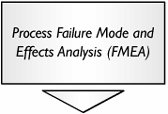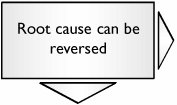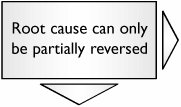Section Q. Process Can t Make Product at All
Q. Process Can't Make Product at AllOverviewSometimes (thankfully, very rarely) processes lose the capability to make product (in specification) at all. Every entity they generate is a defect or the process just cannot generate any entities. This might seem impossible to some but, working in multiple industries, I've seen more than a handful of these cases. This Problem Category is probably least suited to Lean Sigma, but hopefully the roadmap shown might give some pointers to strengthen a better one out there. Examples
Measuring PerformanceThe performance characteristics on which the product specifications are based are the best measures here (e.g., if a specification for viscosity is being used to determine that the product is defective, use viscosity as the metric). These metrics tend to be continuous in nature and make excellent Ys for tool use. Statistical power will be lost if they are converted to an attribute measure of defectiveness (meeting specification or not). In Lean Sigma terms, we would have taken a useful performance metric and converted it into a not-so-useful conformance metric. Tool ApproachThe roadmap here is debatable. Time obviously plays a critical factor in any discussion here. This is usually an "all hands on deck" situation. The tools listed are rigorous, but might be perceived as not quick enoughI'm in complete agreement, but rushing to a solution often takes longer (more haste, less speed). The general path would be to assume that at some point in time the process was working and therefore something has changedin which case, the focus is to determine what did change.
For the following steps, it is usually worthwhile having someone onsite at the process, checking on possibilities as they arise from the tools. Parallelism is good here.
* At this point, the root cause of failure could be known or narrowed to a small number of possibilities that should be investigated quickly to determine which cause is most likely. After the root cause is known, the question would be "Can it be reversed?" with the following answers:
If you've come to this point, things don't look good. (Sorry!) There are limited options available, such as seeking a secondary supply, but really this will invoke a "back to the drawing board" approach. In this case, Design For Six Sigma[12] or Six Sigma Process Design[13] could play a significant role. Sincere good luck to you!
|
EAN: 2147483647
Pages: 138
- Challenging the Unpredictable: Changeable Order Management Systems
- The Second Wave ERP Market: An Australian Viewpoint
- Data Mining for Business Process Reengineering
- Intrinsic and Contextual Data Quality: The Effect of Media and Personal Involvement
- Relevance and Micro-Relevance for the Professional as Determinants of IT-Diffusion and IT-Use in Healthcare








